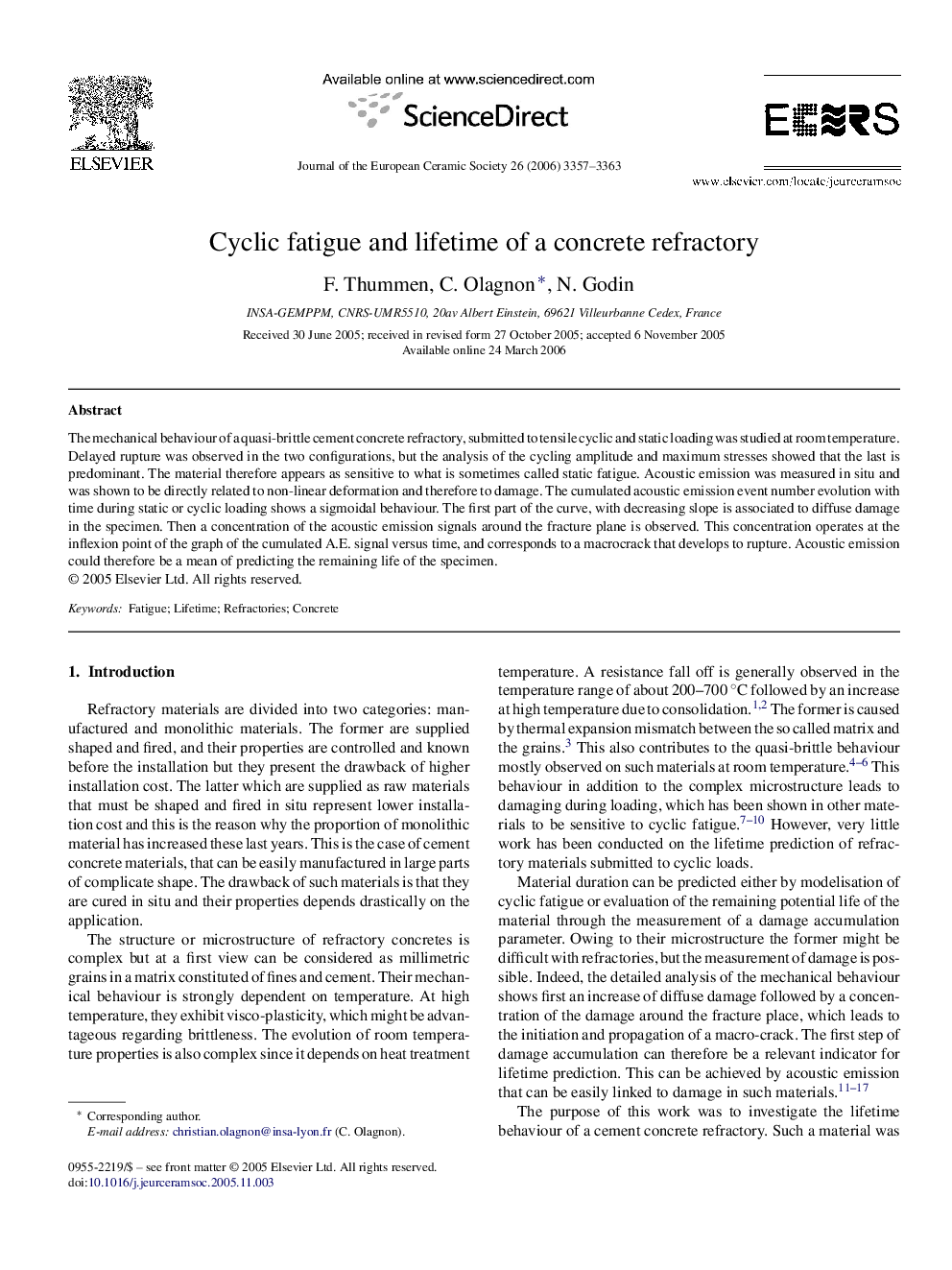| Article ID | Journal | Published Year | Pages | File Type |
|---|---|---|---|---|
| 1477371 | Journal of the European Ceramic Society | 2006 | 7 Pages |
The mechanical behaviour of a quasi-brittle cement concrete refractory, submitted to tensile cyclic and static loading was studied at room temperature. Delayed rupture was observed in the two configurations, but the analysis of the cycling amplitude and maximum stresses showed that the last is predominant. The material therefore appears as sensitive to what is sometimes called static fatigue. Acoustic emission was measured in situ and was shown to be directly related to non-linear deformation and therefore to damage. The cumulated acoustic emission event number evolution with time during static or cyclic loading shows a sigmoidal behaviour. The first part of the curve, with decreasing slope is associated to diffuse damage in the specimen. Then a concentration of the acoustic emission signals around the fracture plane is observed. This concentration operates at the inflexion point of the graph of the cumulated A.E. signal versus time, and corresponds to a macrocrack that develops to rupture. Acoustic emission could therefore be a mean of predicting the remaining life of the specimen.
